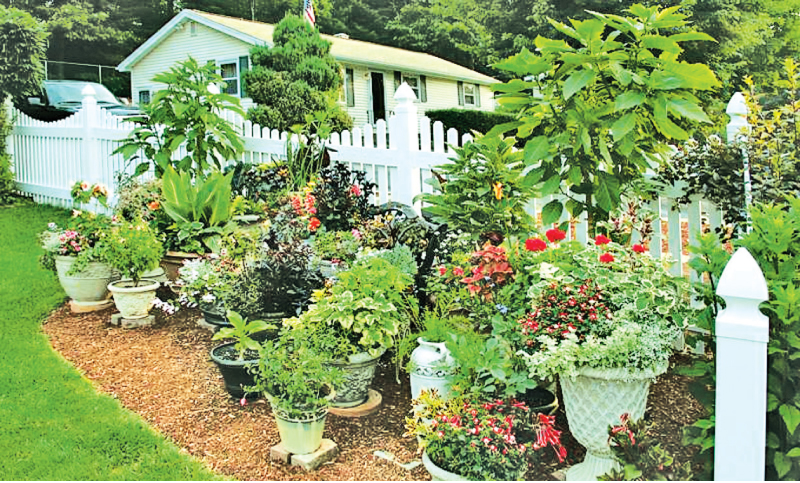Container gardening is a fun and satisfying method for growing your favorite plants. Here are 10 simple container-gardening tips to get you off to a strong start.
Select a Pot
Most plants aren’t fussy about the type of pot they grow in. All they want is enough space to spread their roots and a few good drainage holes to allow excess water to drain. Pots come in a variety of materials, such as terra-cotta, ceramic, wood, and plastic. All of them work equally well, although terra-cotta pots have a tendency to dry out faster than plastic or ceramic, so you’ll need to water them more often.
If you buy a new terra-cotta pot, soak it in a pail of water for a day or two to hydrate it before filling with soil. Some plastic pots might need drainage holes drilled in the bottom. Holes should be at least 1/2 inch wide; smaller holes might clog with soil and prevent the water from draining.

Choose the Right Soil
Fill your containers with a quality commercial potting soil. Never use soil directly from your garden because, when dry, it will harden into a solid mass. Quality potting soil should include generous helpings of some of the following amendments: peat moss, compost, perlite, vermiculite, and/or rotted manure. Inexpensive potting soils are not always a bargain, so read the label before you buy.
Pick Healthy Plants
You can grow almost anything you want in a container -- even trees and shrubs will thrive in a large enough pot. Most people prefer to grow flowers, vegetables, or herbs for their patio, porch, deck, or terrace. Enjoy an edible banquet by mixing a few of each type in the same pot. Strawberries and lettuce, for example, taste as good as they look and make great companions for sun-loving annual and perennial flowers.
Match Light Conditions
When selecting plants, read the plant tags before you buy so you know whether they grow best in sun or shade. You don’t want to mix sun- and shade-loving flowers in the same pot. Top annuals for sun include petunias, geraniums, calibrachoa, and verbena. Some good annuals for shade include begonia, caladium, impatiens, and Torenia. All vegetables and herbs need full sun.
Plant in Layers
For a gorgeous layered look, be sure to include a tall, showy plant (thriller), a bushy medium-size plant (filler), and a trailing blooming plant (spiller) in your containers.
Container-Gardening Tip: Select varieties that complement each other in color and leaf form, too. There are many plants that are more prized for their gorgeous foliage than they are for their flowers.
Water Frequently
Container plants require more frequent watering than those growing directly in the garden. Water whenever the soil surface feels dry to the touch. During hot, sunny periods you’ll probably have to irrigate every day. This is especially important for hanging baskets that dry out faster because they are buffeted by the wind. You can use a watering can, garden hose, or install a drip irrigation system with a timer that waters your plants automatically every day.
Fertilize Regularly
To keep flowers and vegetables in top form all summer, you’ll need to fertilize them. Some potting soils have slow-release fertilizer already mixed in, but it’s still a good idea to add a few drops of liquid fertilizer every time you water. Flowers and vegetables are heavy feeders and will thrive with an extra dose of plant food.
Remove Faded Blooms
Annual and perennial flowers will look better when their old, faded blooms are removed. This process, called “deadheading,” will encourage a whole new crop of flowers to form. On larger species, such as geraniums, simply clip away the dead flower heads with your fingers or pruning shears. For annuals with tiny flowers, such as sweet alyssum, shear back the entire plant by about 1/3 with scissors or lawn clippers.
Renew and Replace
Even with excellent care, some annuals and perennials will begin to look tired by late summer. Instead of trying to revive them, carefully remove the plants from the pot and pop in one or two replacements to give your container a second life. Most garden centers offer replacement annuals in mid to late summer.
-bhg.com



Add new comment